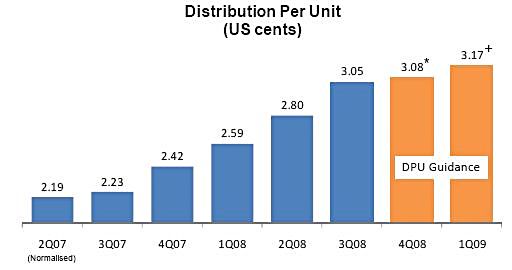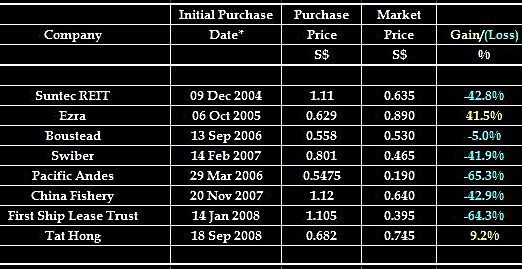 Musicwhiz's portfolio (purchase cost of $133,700) as of Apr 9 has an unrealised loss of 24%, after taking into account dividends received.
Musicwhiz's portfolio (purchase cost of $133,700) as of Apr 9 has an unrealised loss of 24%, after taking into account dividends received.
PEOPLE USUALLY highlight the companies they have bought but almost no one mentions those they have correctly avoided.
Mistakes can be classified according to "omission" and "commission". Commission means purchasing a company which is a dud and makes you lose tons of money. Omission means NOT purchasing a company which later turns out to be a star, thus it is mainly opportunity costs.
If one consistently avoids buying the "dud" or "over-hyped" companies, one can indeed prevent a substantial loss of wealth. Preserving capital is also a good way of building wealth, as Warren Buffett advises us to "Never Lose Money".
Even though cynical readers may point out that I have "lost money" due to this bear market and sharp recession, my argument is that over the long-term, I am confident of not losing money.
This is because aside from choosing the right companies to take a stake in, it is also important to spot the dud companies which may implode.
The companies which I had considered but rejected fall into a few broad categories. One of them is "wrong business model": I decide that it cannot possibly sustain a competitive edge. Either that or the business model seems flawed, risky or inherently unsound.
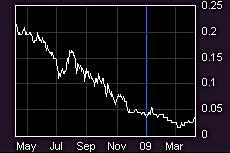 Gems TV
Gems TV
An example is GEMS TV, which was listed a few years back. It sells gemstones through television (akin to TV marketing) and it had penetrated the UK and USA markets. After its IPO, it traded at around $1.50 and analysts were fervently touting target prices as high as $3 (yes, I still have that report!).
I decided that buying jewellery is a personal process and most people would rather go to stores to try them out. GEMS TV had another weakness in its model: advertising is expensive and requires huge upfront capex with limited chances of success. It's a retail operation, not a contract-based business.
Hence my decision to avoid the company even though analysts were bullish. The benefit of omission has saved me a ton of money as the company wents gone on to announce 4 consecutive quarters of losses and is now trading at 3 cents per share.
Another category of companies which I will avoid are those with razor-thin margins. Some industries are effectively commoditized like semi-conductors and PCB boards so the margin is extremely thin (close to 2-3% or maybe less).
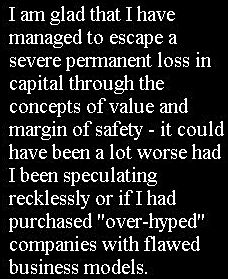 Musicwhiz
Musicwhiz
A small escalation of costs from suppliers would turn into an avalanche for the company, which may have problems raising prices due to a lack of pricing power. Some examples include Chartered Semiconductor (which recently did yet another rights issue) and Jurong Technologies.
The former has seen massive losses due to the plunge in worldwide chip demand while trading in Jurong Tech shares has been suspended pending the outcome of judicial management proceedings after it was served statutory demands from several banks.
Other companies with very thin margins are Surface Mount Tech and also Olam* (surprisingly, this "blue chip" has margins of about 0.5-1% only).
*note: If one had purchased Olam during its 2005 IPO at 62 cents, one would still be sitting on nearly a 100% gain (more if you include dividends over the years). This was mainly due to its aggressive M&A strategy which saw many acquisitions (through gearing) over the last few years. These have been driving earnings in the near term. However, I am focusing on the margins which I am not comfortable with. The company DOES have a sustainable competitive advantage in its total SCM business model, though.
Avoid the overhyped stocks!
Another category of companies I choose to avoid are the over-hyped ones ! The hype can be done through various ways, either through analysts strongly pushing the company without taking a close look at the business model, operating risks, cash flow generation, capex and gearing.
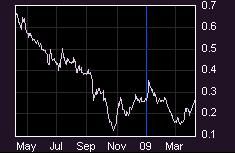 Synear Foods
Synear Foods
Or the over-hype is on the basis of valuations alone (e.g. 20-30x PER meaning you need 20-30 years to recover your capital!). I guess most of the S shares would fall into the over-hyped category, as I remember the heydays back in 2006 and early 2007 when so many China-based companies came here to list.
Gosh, there was almost one listing per month that time and if you got in at IPO it was almost guaranteed to make you money if you "stag" it. Such was the immense hype surrounding the "China Growth Story".
Of course, 2 years later, valuations have come down to 1-2x and a slew of scandals have hit S-Shares, notably Fibrechem, Oriental Century, China Sun and China Printing and Dyeing.
This once over-hyped segment has faced almost a total collapse in confidence and investors have fled. This situation reminds me of the hype surrounding the dot.com companies during the dot.com bubble in 1999.
Some examples of companies I have avoided include Synear Foods (trading at 30x PER back then - $2.00 and still being pushed by analysts), China Energy (their DME technology was touted as an emerging technology and valuations were pushed to stratospheric levels) as well as China New Town.
So after all has been said and done, do remember to give yourself a pat on the back for the companies that you correctly avoided! Most people like to tell you about their winners or blue chips, but if you probe further they tell you in a quiet voice about the duds they had bought donkey years ago and are still holding on to them.
The original article was first published on Musicwhiz's blog (http://sgmusicwhiz.blogspot.com/), and is reproduced here (with some editing) with the kind permission of Musicwhiz.
Previous contribution: MUSICWHIZ: How I'm dealing with market woes



